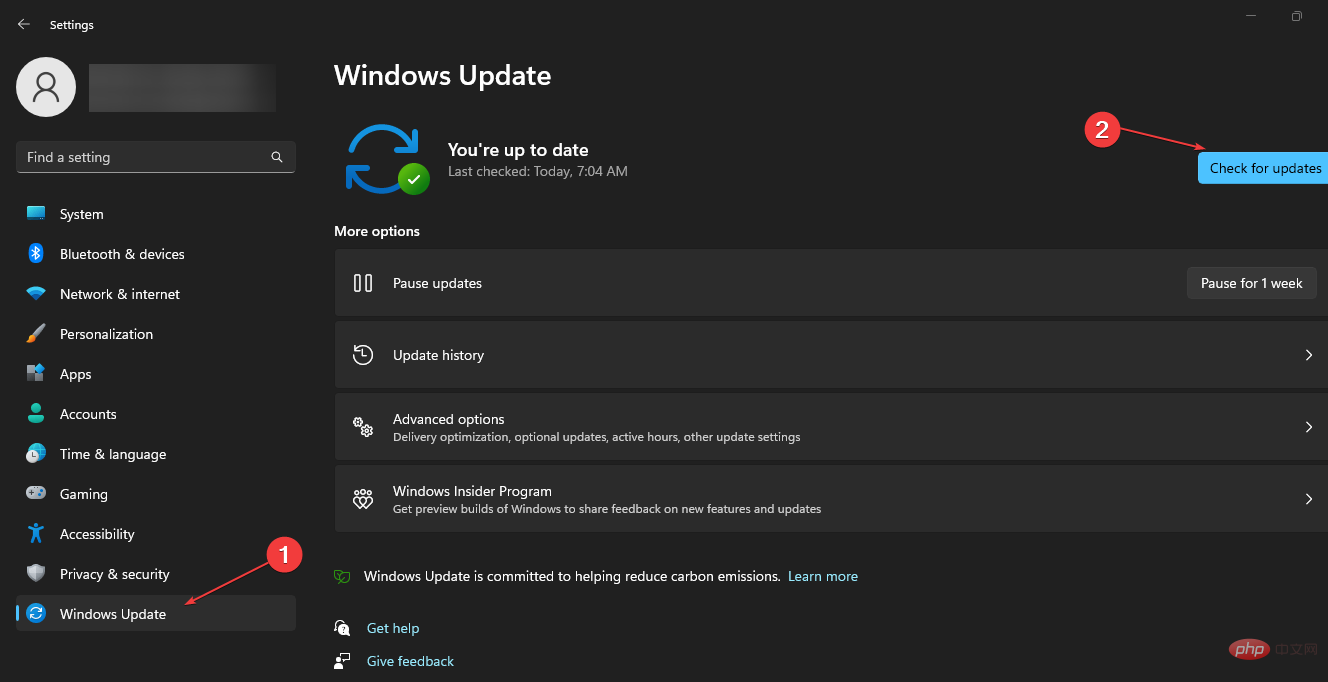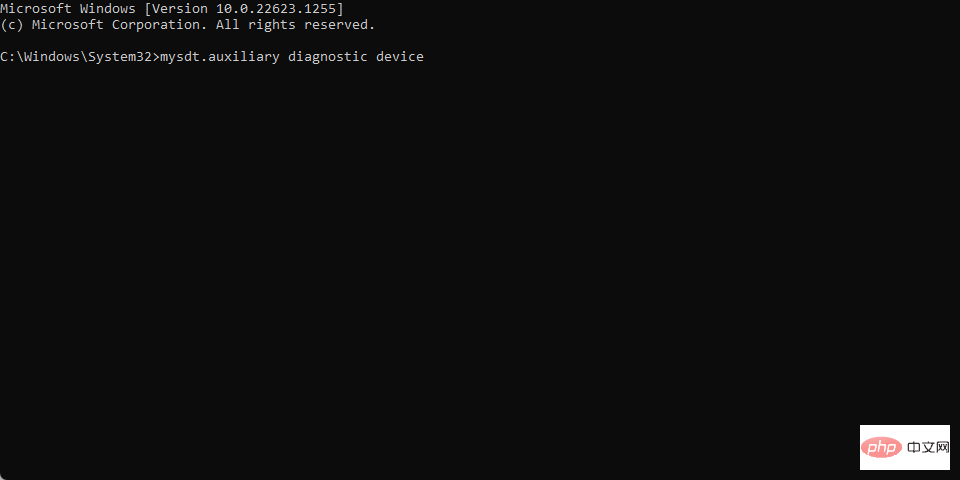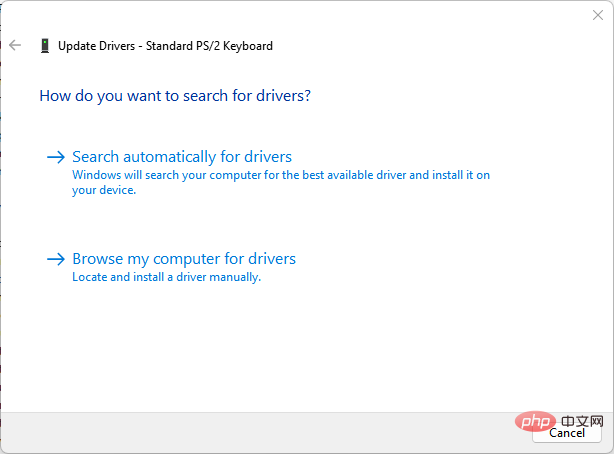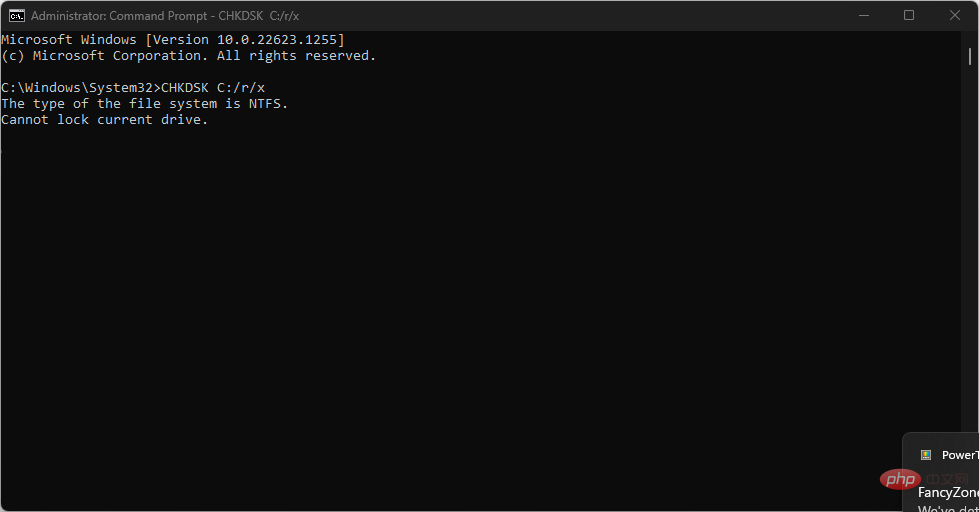WHEA logger: what it means and how to fix it
Windows PC is advanced and has many components that make it suitable for various purposes. However, users are prone to encounter several problems when using PCs. WHEA logger is a common recent error among Windows users and is usually accompanied by many event IDs.
It is related to hardware issues and can generate during any activity on the PC. Additionally, you might be interested in our detailed article about the WHEA internal error and some fixes to resolve it.
What is the WHEA logger?
Windows Hardware Error Architecture (WHEA) is a component in Windows PCs that raises Event Tracing for Windows (ETW) events whenever a hardware error occurs. Whenever these hardware error events occur, it logs these events in the system event log.
In addition, the WHEA logger records descriptions of a large number of hardware error events caused by WHEA, making it easier for users to identify errors. In addition, hardware error events can be obtained by querying the system event log or receiving event notifications from the application.
However, the Windows Hardware Error Architecture (WHEA) logger records hardware-generated events captured by the operating system. It then displays them in Event Viewer by using event IDs to uniquely identify them on the computer.
What is the reason for WHEA logger event ID?
Since WHEA error events come with different event IDs such as 1, 17, 18, 19, 47, etc., they can occur for various reasons. Some are:
- Hardware Failure – You may encounter WHEA errors due to hardware failure (such as hard drive failure, memory failure, processor problem, etc.). They prevent the system from communicating with the hardware it is running on, causing errors.
- System Driver Issues – When outdated or corrupted drivers are running on your PC, it can also cause WHEA errors. These drivers are responsible for the hardware on your computer, so when they are incomplete or inaccessible, the system can malfunction.
- Power Supply Issues and Overheating – When the power supply is unstable, the system may malfunction. It blocks the activity of the hardware, preventing it from receiving enough power to function. Additionally, overheating can cause PC components to malfunction.
Other factors not listed above may be the cause of WHEA errors. Nonetheless, we will discuss some fixes to resolve these issues and get your system working properly.
How to fix WHEA logger?
Before proceeding with any advanced troubleshooting steps to resolve the issue, try the following:
- Make sure the system is plugged into a stable power source.
- Close background applications running on your computer.
- Temporarily disable the antivirus software on your computer.
- Restart Windows in Safe Mode and check if the problem persists.
If the above steps do not work, proceed to the following solutions:
Fix WHEA Logger Event ID 1
1. Run SFC and DISM to repair the corrupted System Files
- Left-click the "Start" button, type "Command Prompt" and click the "Run as administrator" option .
- Click "Yes" on the User Account Control (UAC) prompt.
- Type the following and press: Enter
<strong>sfc /scannow</strong> ##Type the following and press Then press:
##Type the following and press Then press: - Enter
DISM /Online /Cleanup-Image /RestoreHealth<strong></strong> Restart the computer and check the WHEA logger event Whether ID 1 still exists.
Restart the computer and check the WHEA logger event Whether ID 1 still exists.
Expert Tip:
Some PC problems are difficult to solve, especially when they involve corrupted repositories or missing Windows files. If you are having trouble fixing errors, your system may be partially corrupted. We recommend installing Restoro, a tool that will scan your machine and determine what the fault is.
Click here to download and start repairing.
Fix WHEA logger event ID 17
2. Update Windows operating system
- Press to open the Windows Settings application. WindowsI
- Click the Windows Update category and select Check for Updates. Wait for Windows Update results and if Windows Update is available, click Install Update.

- Restart the computer.
Update Windows operating system will install new updates and patches to fix bugs affecting the current version. Additionally, it resolves a hardware compatibility issue that prompts WHEA Logger Event ID 17 in Event Viewer.
Read about fixing the problem Windows cannot connect to the update service when an error occurs on your PC.
Fix WHEA Logger Event ID 18
3. Use the Hardware Troubleshooter command line
- Left click on the "Start" button , type "Command Prompt" and click on the "Run as administrator" option.
- Click "Yes" on the User Account Control (UAC) prompt.
- Type the following and press to launch the Windows Hardware and Devices Troubleshooter: Enter
<strong>mysdt.auxiliary diagnostic device </strong>
- Click Next to continue the analysis and troubleshooting process.
Running the Hardware and Devices Troubleshooter will resolve hardware issues that may be causing WHEA Logger Event ID 18. Check out our guide on how to fix Command Prompt not working on your PC.
Fix WHEA logger event ID 19
4. Update keyboard driver
- Key prompt "Run" window, type devmgmt. msc, and then click "OK" to open Device Manager. WindowsR
- Expand the keyboard entry you want to update, right-click the device, and select Update Driver from the drop-down menu.

- Click Automatically search for updated driver software option.

- Repeat this process for other drivers on your computer.
Updating device drivers on your PC will fix bugs affecting your device and install new features to improve its performance. If you have any questions, check out our guide for more steps on updating drivers on Windows 11.
If you want to try other methods to update your keyboard driver, you can use the DriverFix app, which helps you get the latest updates from its repository after a thorough scan of your device.
Fix WHEA Logger Event ID 47
5. Run Check Disk Utility
- Left click on the "Start" button and type "Command Prompt" and click on the "Run as administrator" option.
- Click "Yes" on the User Account Control (UAC) prompt.
- Type the following command and press: Enter
<strong> CHKDSK C:/r/x</strong> ##Close
##Close - Command Prompt and restart the computer to check if WHEA Logger Event ID 47 still exists.
The above is the detailed content of WHEA logger: what it means and how to fix it. For more information, please follow other related articles on the PHP Chinese website!

Hot AI Tools

Undresser.AI Undress
AI-powered app for creating realistic nude photos

AI Clothes Remover
Online AI tool for removing clothes from photos.

Undress AI Tool
Undress images for free

Clothoff.io
AI clothes remover

Video Face Swap
Swap faces in any video effortlessly with our completely free AI face swap tool!

Hot Article

Hot Tools

Notepad++7.3.1
Easy-to-use and free code editor

SublimeText3 Chinese version
Chinese version, very easy to use

Zend Studio 13.0.1
Powerful PHP integrated development environment

Dreamweaver CS6
Visual web development tools

SublimeText3 Mac version
God-level code editing software (SublimeText3)

Hot Topics
 1386
1386
 52
52
 How to convert XML to PDF on your phone?
Apr 02, 2025 pm 10:18 PM
How to convert XML to PDF on your phone?
Apr 02, 2025 pm 10:18 PM
It is not easy to convert XML to PDF directly on your phone, but it can be achieved with the help of cloud services. It is recommended to use a lightweight mobile app to upload XML files and receive generated PDFs, and convert them with cloud APIs. Cloud APIs use serverless computing services, and choosing the right platform is crucial. Complexity, error handling, security, and optimization strategies need to be considered when handling XML parsing and PDF generation. The entire process requires the front-end app and the back-end API to work together, and it requires some understanding of a variety of technologies.
 xml online formatting
Apr 02, 2025 pm 10:06 PM
xml online formatting
Apr 02, 2025 pm 10:06 PM
XML Online Format Tools automatically organizes messy XML code into easy-to-read and maintain formats. By parsing the syntax tree of XML and applying formatting rules, these tools optimize the structure of the code, enhancing its maintainability and teamwork efficiency.
 What is the reason why PS keeps showing loading?
Apr 06, 2025 pm 06:39 PM
What is the reason why PS keeps showing loading?
Apr 06, 2025 pm 06:39 PM
PS "Loading" problems are caused by resource access or processing problems: hard disk reading speed is slow or bad: Use CrystalDiskInfo to check the hard disk health and replace the problematic hard disk. Insufficient memory: Upgrade memory to meet PS's needs for high-resolution images and complex layer processing. Graphics card drivers are outdated or corrupted: Update the drivers to optimize communication between the PS and the graphics card. File paths are too long or file names have special characters: use short paths and avoid special characters. PS's own problem: Reinstall or repair the PS installer.
 How to solve the problem of loading when PS is always showing that it is loading?
Apr 06, 2025 pm 06:30 PM
How to solve the problem of loading when PS is always showing that it is loading?
Apr 06, 2025 pm 06:30 PM
PS card is "Loading"? Solutions include: checking the computer configuration (memory, hard disk, processor), cleaning hard disk fragmentation, updating the graphics card driver, adjusting PS settings, reinstalling PS, and developing good programming habits.
 How to speed up the loading speed of PS?
Apr 06, 2025 pm 06:27 PM
How to speed up the loading speed of PS?
Apr 06, 2025 pm 06:27 PM
Solving the problem of slow Photoshop startup requires a multi-pronged approach, including: upgrading hardware (memory, solid-state drive, CPU); uninstalling outdated or incompatible plug-ins; cleaning up system garbage and excessive background programs regularly; closing irrelevant programs with caution; avoiding opening a large number of files during startup.
 Does H5 page production require continuous maintenance?
Apr 05, 2025 pm 11:27 PM
Does H5 page production require continuous maintenance?
Apr 05, 2025 pm 11:27 PM
The H5 page needs to be maintained continuously, because of factors such as code vulnerabilities, browser compatibility, performance optimization, security updates and user experience improvements. Effective maintenance methods include establishing a complete testing system, using version control tools, regularly monitoring page performance, collecting user feedback and formulating maintenance plans.
 The XML file is too large, can I convert PDFs on my phone?
Apr 02, 2025 pm 09:54 PM
The XML file is too large, can I convert PDFs on my phone?
Apr 02, 2025 pm 09:54 PM
It is difficult to directly convert super large XML to PDF on mobile phones. It is recommended to adopt a partition strategy: cloud conversion: upload to the cloud platform and processed by the server. It is efficient and stable but requires network and possible payment; segmented processing: Use programming tools to split large XML into small files and convert them one by one, requiring programming capabilities; find conversion tools that specialize in processing large files, pay attention to checking user reviews to avoid choosing software that is prone to crash.
 How to solve the problem of loading when the PS opens the file?
Apr 06, 2025 pm 06:33 PM
How to solve the problem of loading when the PS opens the file?
Apr 06, 2025 pm 06:33 PM
"Loading" stuttering occurs when opening a file on PS. The reasons may include: too large or corrupted file, insufficient memory, slow hard disk speed, graphics card driver problems, PS version or plug-in conflicts. The solutions are: check file size and integrity, increase memory, upgrade hard disk, update graphics card driver, uninstall or disable suspicious plug-ins, and reinstall PS. This problem can be effectively solved by gradually checking and making good use of PS performance settings and developing good file management habits.










